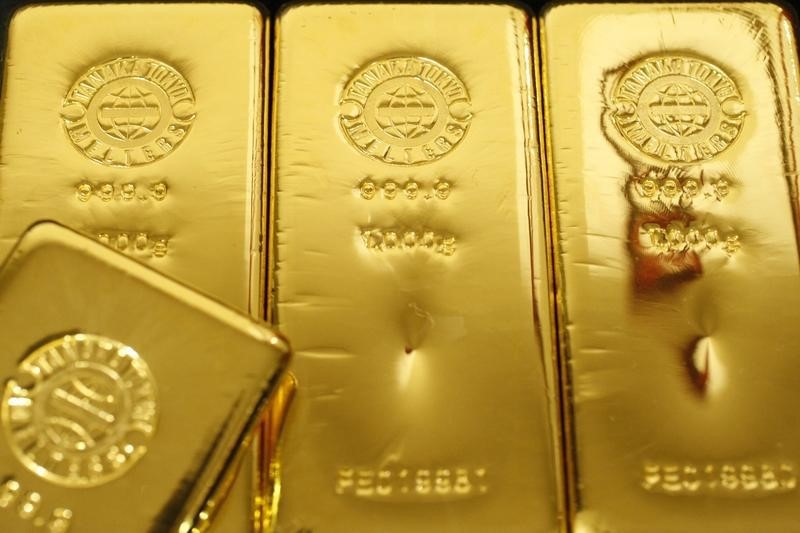Investing.com– Gold prices rose slightly in Asian trade on Wednesday, keeping recent record highs in sight as traders waited to see just by how much the Federal Reserve will cut interest rates.
Bullion prices briefly hit record highs this week amid growing expectations for a 50 basis point cut, which dented the dollar and Treasury yields. But some stronger-than-expected U.S. data complicated expectations of a large rate cut.
rose 0.2% to $2,574.15 an ounce, while rose 0.3% to $2,600.40 an ounce by 00:16 ET (04:16 GMT).
Gold just below record highs with rate cuts in focus
Spot prices were just below a record high of $2,589.78 an ounce hit earlier this week.
Gold’s biggest point of support was growing conviction that the Fed will at the conclusion of a meeting later on Wednesday.
While markets were initially split over a 25 or 50 basis point cut, showed expectations shifting towards a 50 bps reduction in recent sessions.
Bets on a 50 bps cut persisted even as recent and inflation data read stronger than expected, reflecting some resilience in the U.S. economy.
But concerns over a weakening labor market are expected to see the Fed kick off an easing cycle that could bring interest rates lower by at least 100 bps by the end of 2024.
Lower rates bode well for gold and other precious metals, given that they herald a lower opportunity cost to invest in non-yielding assets.
But other precious metals lagged gold, with down 0.5% to $983.90 an ounce, while fell 0.5% to $30.837 an ounce.
Copper slides as China markets reopen
Among industrial metals, copper prices fell on Wednesday as markets in top importer China reopened after a long weekend, with local traders reacting to more weak economic data from the country.
Benchmark on the London Metal Exchange fell 0.6% to $9,326.50 a ton, while one-month fell 0.9% to $4.2475 a pound.
Weak industrial production and retail sales data from China, released over the weekend, pointed to sustained weakness in the country’s biggest economic engines, which traders feared could further dent its appetite for copper.
But the weak readings also spurred some bets that Beijing will be forced into rolling out more stimulus measures, which could boost near-term growth and help buoy copper demand.
This notion helped limit overall losses in copper.
Read the full article here











